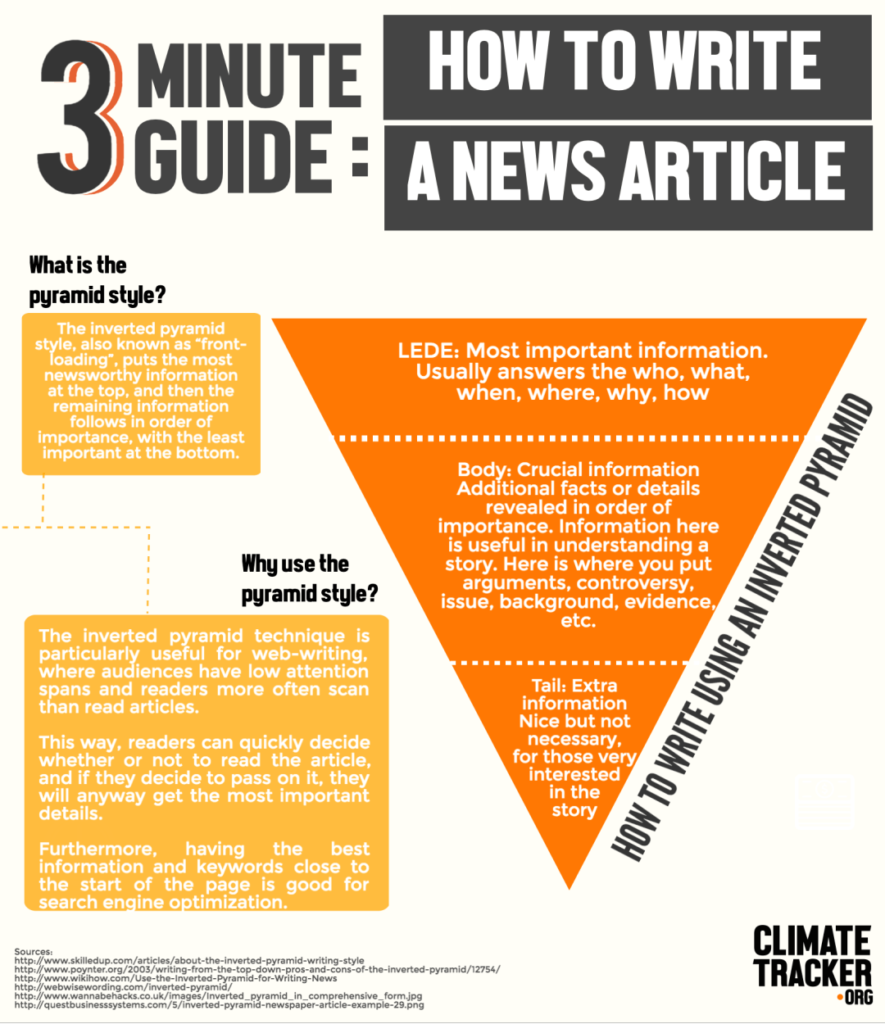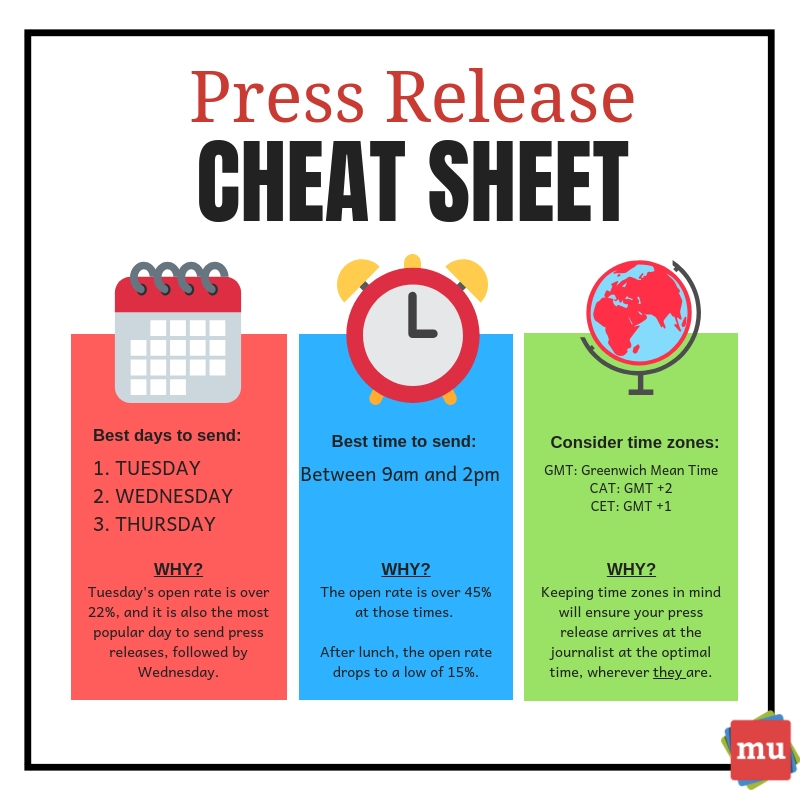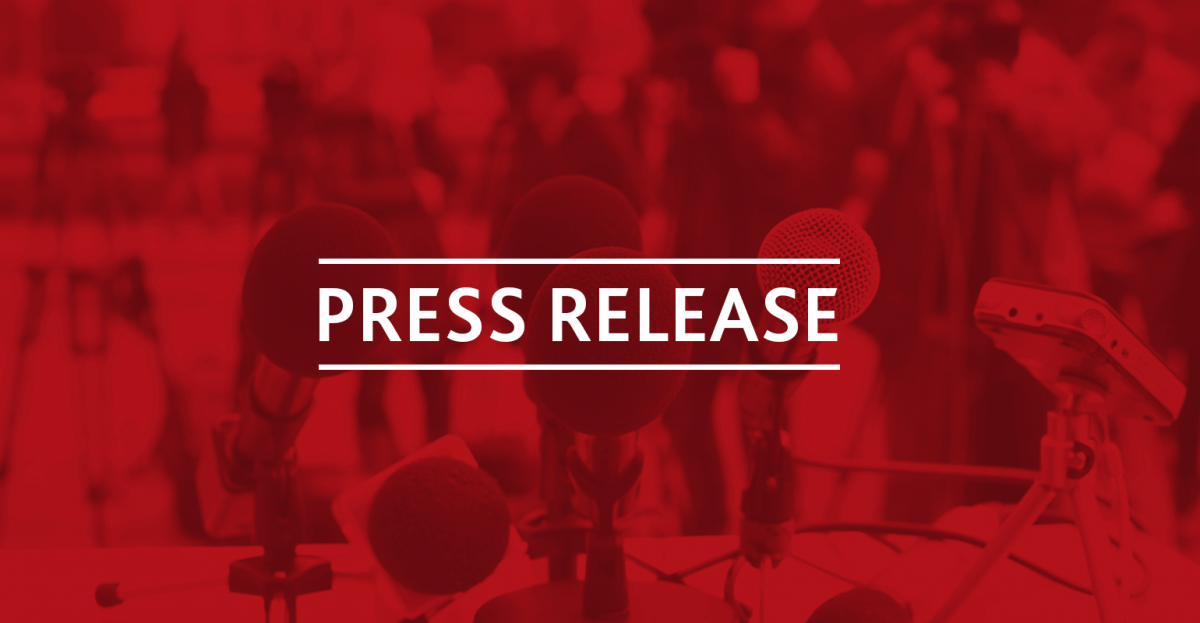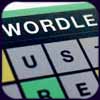Press Release
What Is a Press Release ? How to Write a Press Release ?
People now have control over where, when, and how they consume information. As a result, public relations is no longer about feeding into a traditional news cycle; it’s about providing relevant content when, where, and how your prospects, influencers, and customers will consume it.
Sounds pretty hopeless, right? Wrong. While relationship-building still helps you get into popular publications, we now have the opportunity to quit playing the waiting game and generate our own buzz. By turning your PR strategy into an inbound one, you create opportunities that weren’t there before and carve out a place for your company, building meaningful mindshare with your target audiences in the process.
One of the most crucial updates to make to your PR strategy is to think of press releases as an opportunity to connect to the audiences you care about — including, but not limited to, reporters.
What Is a Press Release ?
A regular cadence of meaningful news can help a company stand out and build mindshare with journalists over time. That’s where the press release (or news announcement) comes in.
A press release is an official announcement (written or recorded) that an organization issues to the news media and beyond. Whether we call it a “press release,” a “press statement,” a “news release,” or a “media release,” we’re always talking about the same basic thing.
While the heading should contain action verbs, the first paragraph should answer the “who,” “what,” “why,” and “where.” The press release should also contain understandable language and a quote.
Most press releases are succinct at just a page long — two pages, tops. Ultimately, companies want to provide enough information so that news outlets have sufficient material for publishing their own stories about whatever the company is announcing in the release.
And while it may be tempting to craft a press release that embellishes your company’s accomplishments or twists the facts to make a story sound more intriguing to the media, remember: Press releases live in the public domain, which means your customers and prospective customers can see them. So instead of thinking of a press release solely as a ticket to earning news coverage, you should also think of it as a valuable piece of marketing content.
Sample Press Release Format
When formatting a press-release, you want to write it in a newsy, straightforward way so a journalist who might write about it can imagine it as an article on their news site.
Press Release Format
- Title and Italicized Subheading to Summarize the News
- News Location and newspeg in opening line
- Two to Three Paragraphs to Add Information
- Bulleted Facts or Figures
- Company Description at Bottom
- Contact Information and “For Immediate Release” at the Top
- A “###” at the End
more:
How to Create a Wikipedia Page for an celebrities : Artist, Actor, Singer or athletes
As noted above, you’ll want your format to include traditional press-release items like your contact information, the words “For immediate release,” a note about your location, and a quick bio about your company. Having specific spots for those elements will prevent you from needing to mention it in your body copy so you can focus on discussing the news at hand.
You also might want to include “###” or another signifier to show the journalist that the release has ended. In the past, this prevented busy journalists from waiting or flipping the page for more information when there was no more news. However, this tradition is still adopted and highly-respected today.
When it comes to formatting the body copy and headline, click here or scroll down for writing tips.
In this example, Catbrella Inc., a fictitious ad agency which just gained its 10th Twitter follower after two years of paid social media efforts, announces its achievement in a press release.
*Disclaimer: HubSpot is entirely responsible for the silliness of this faux announcement.
How to Write a Press Release
Writing a press release to break important company news can help businesses grow better, but doing it right is just as important. Here’s how to write a press release, like the one above, step-by-step.
Rule 1: Make your headline irresistible.
You’ve got your announcement in mind, and now it’s time to get it down in words to share with your community, industry, and followers. Just like writing the perfect blog post title, setting up your press release for success starts with your headline. You only have one line to work with, which can seem scary, but consider diction carefully to make your headline captivating.
Use action verbs, clear, understandable language, and keep your headline simple and short — fortune (and search engines) reward the brief, so keep your title to one line to clearly focus people’s attention on your topline message.
Most importantly, make it interesting: Keep in mind that reporters get dozens, if not hundreds, of releases each day, so invest the time to write a compelling headline. It’s worth the time and effort on your part.
Rule 2: Convey the news value to the press.
For reporters, analysts, influencers, or followers to be inclined to share your announcement, you have to tell them upfront why they should care.
The first paragraph of your release should cover the who, what, why, where, and how of your new launch, update, or development. Reporters don’t have a ton of time to sift through details and fluffy background information — they just need the facts that’ll help them tell your story to someone else from a position of authority.
There shouldn’t be any new, crucial information covered after this section that the reader could potentially miss. A good way to ensure this is by using the reverse pyramid formula when writing your press release.
Rule 3: Offer a tempting quote.
Once you’ve set the scene, it’s time to bring your details to life with a quote that reporters can use for context around your announcement and help paint a picture of how your news affects the given industry, customer base, and landscape.
Ideally, quotes will be from key stakeholders in your company including your executive team, project leads, or those directly impacted by your announcement. Quoting key figures and authorities underlines the importance of your development. The chosen quote should shape your narrative and emphasize the core of the announcement. Don’t ask everyone in your office for a comment or feel compelled to quote all 25 people included in the acquisition — pick one or two critical spokespeople and focus the quotes around their unique perspective.
Rule 4: Provide valuable background information on the subject.
In this last paragraph, keep in mind that the reader already has all of the vital details and information they need to file a story or spread the word.
It can be tempting to provide superfluous facts and tidbits about your company or the development of your announcement — we sometimes think a piece of writing is lacking if it isn’t drawn-out and just shy of being a novella. However, a press release needs to be helpful and concise.
Offer details here that strengthen your narrative, like creative or noteworthy ways your company developed the project or announcement at hand. Or, when applicable, comment on future implications of your announcement.
Another good way to add value to your press release is by using newsjacking. A process of relating your press release to something currently going on to make it more valuable to the journalist and reader.
more:
Get That Fancy Blue Badge With Engaging Content and Good PR
Rule 5: Summarize the “who” and the “what” in a boilerplate.
Twitter is chock-full of reporters lamenting press releases or pitches that don’t clearly explain what the company does or what the announcement is actually about, so instead of being the butt of a joke, make your release incredibly easy to reference.
Describe what your company does in clear, plain English, include a link to your company’s homepage early on, and make your boilerplate succinct and straightforward. If you cite data, include a reference link for the data source, and make sure every name in the release has an associated title and company as well.
To keep yourself honest on this front, ask a friend or colleague to read the release without context and ask if they can easily and readily explain why the announcement matters, what your company does, and why the executives included are quoted. If the answer to any of those questions is no, get back to the drawing board.
The key to keeping your PR strategy new school is forgetting preconceived notions of what public relations is and instead focusing on creating highly remarkable content. Traditional press releases can still be really valuable when executed well, so instead of ditching releases as a tactic, give them a modern makeover to make them more useful for your marketing.
Think about how you’ve used inbound methods to transform your marketing strategies to be more personalized, approachable, and build relationships. Those same principles apply to your PR strategy: Create content to craft your own story and use tactful outreach to get reporters and analysts familiar with your brand.
Press Release Examples
Many people think press releases have to be chock full of buzzwords and branded terms. “Big data,” anyone? Five-syllable words you have to look up on Thesaurus.com? Quotes from every executive on the planet that go on for pages? We’ve seen it all. Unfortunately, so have reporters — and they are not fans.
Instead of stuffing your next release with industry jargon, take a page out of our book (okay fine, ebook), The Newsworthy Guide to Inbound Public Relations, and brainstorm some creative approaches for your next announcement. Can you include new data? A remarkable graphic or video? A shareable SlideShare? If so, a creative angle can help carry your content and increase the likelihood of social sharing.
Types of Press Releases
While there’s no cut-and-dried formula for what a press release should include, here are a few types of occasions to help you carve out a focus for your press release and determine what content would help you broadcast your news in the best way:
- New product launches
- Mergers and acquisitions
- Updates to existing products
- Hosting or attending an event
- Opening a new office
- Introducing a new partnership
- Rebranding
- Promoting/hiring a new executive
- Receiving an award
Now, to get you thinking on the right track, take a look at some creative press release examples below, the type of news each one is reporting on, and what makes the release unique:
Type of press release: Event
Škoda, a car manufacturer based in the Czech Republic, recently showed off its sponsored racing team in two big places: at the 2017 World Rally Championship, and in a sleek, image-based press release reporting on the event.
The news release, shown above, doesn’t have any trouble aligning the look and feel of the Škoda brand with the press release itself — which is a crucial aspect of any company’s press content. The release opens with a large feature image of one of its vehicles in the same vibrant green that covers the business’s website. The press release also begins with three helpful bullet points summarizing the news for readers, and ends the release with a couple of captioned actions shots to give reporters more context around the event.
Type of press release: Acquisition
Yes, a video press release! This news item from ScribbleLive gave reporters nearly everything they’d need to republish this story, all in a thorough two-minute video about the company’s latest acquisition.
ScribbleLive opens the video press release above with the company’s logo and a clear header stating the news. This allowed the company’s CEO to jump right into his commentary on the acquisition, giving reporters plenty of quotable material on the state of the industry and why this merger was so important to them.
The press release also segments the video the same way a written press release would, breaking up the CEO’s commentary by the question he’s answering. This makes it easy for viewers to jump through the video and find the information they’re most interested in hearing about.
And, being on YouTube, a press release in this format allows reporters to embed the news content directly on their site, making ScribbleLive’s news that much easier to share.
Type of press release: Opening a new office
When you open a new headquarters, it can be hard to figure out what to say. People just want to get a look at the new digs! In the above press release by Peapod, an online grocery service, the company puts photos of its new office right at the top, immediately showing readers what makes this news so significant for Peapod.
The release even singles out a quote by the Mayor of Chicago just below the headline, hinting to reporters who are writing about Peapod’s new HQ that this is the remark Peapod is most interested in sharing with readers.
Check out the boilerplate text at the bottom of the above press release. “About [company]” text can too easily blend in with the actual news text, making the piece seem longer than it really is. By isolating this copy in a dark gray box, Peapod provides a smoother reading experience and ensures the story itself doesn’t get lost in an intimidatingly long wall of text.
How to Write a PR and News Release ?
Type of press release: New product launches
When you’re launching products or services, the information is often best expressed in written form. But when all you’re doing is writing about your new offering’s price and features, it can be difficult for others to refer to and report on it later. We at HubSpot know the challenge well.
The graphic above helped us to supplement our own product announcement — written by our fantastic Communications Manager, Ellie Botelho — with details that needed a visual aid. Using a combination of colors and shapes, this graphic allowed us to reveal important relationships between products, as well as their respective prices and when they’ll be available. (Interested one of our products? Take note! ^)
We’ve also crafted this comprehensive, easy-to-follow press release template complete with a promotional plan and considerations for your next announcement. We use these same guidelines when writing and formatting our releases here at HubSpot, and created a faux, sample release to illustrate what content goes where and why.
Tips for Publishing Press Releases
Writing a press release is really only half the battle. Once you’re finished with production, it’ll be time to focus on distribution.
Of course, we’re all familiar with the traditional distribution levers we can pull, which include publishing the press release on our website/blog, as well as sharing the press release with our followers/subscribers via social media and email. But for ensuring a press release gets the maximum amount of distribution possible, here are some tips you can follow.
1. Reach out to specific journalists.
Instead of blasting a press release out to every journalist you can find an email address for, focus on a few journalists who have experience covering your industry (and company, hopefully) and send them personalized messages. Connect the dots. Show why what you wrote connects to what they write.
2. Don’t be afraid to go offline.
Most journalists have mountains of emails (and press releases) to sort through. Try sending your release through snail mail or another offline channel to differentiate yourself.
3. Send the release to top journalists the day before.
Give journalists some time to craft a story around your press release by sending it to them — under embargo — the day before it officially goes live. (FYI “under embargo” just means they aren’t allowed to share the information in the press release until the time you specify.)
4. To avoid competition, don’t publish your release on the hour.
If you’re publishing your press release on a distribution service like PR Newswire or Business Wire, avoid publishing it on the hour (e.g., 1 p.m., or 3 p.m., or 5 p.m.). The reason? Most companies schedule their releases to go out on the hour, which means if your release goes out on the hour too, it’s more likely to get lost in the shuffle. Instead, try going with a more distinct time (e.g., 1:12 p.m., or 3:18 p.m., or 5:22 p.m.).
5. Share your media coverage.
If all goes according to plan, and your press release gets picked up by the media, your job still isn’t finished. To keep the buzz going, you can release a “second wave” of distribution by sharing the specific stories that news outlets write based on your press release.
How to Write a Press Release in 7 Easy Steps
Want to learn how to write a press release?
Press releases are one of the easiest ways to engage journalists and get your news story published.
If you’re a business owner or PR rep looking to spread information about your brand, press releases are the way to go!
In this post, I’m going to show you everything you need to know about how to write a press release (including a great press release example and the press release format).
I’ll even give you a press release template for multiple occasions that’s worked for 5000+ of my customers!
What is a Press Release?
Before you learn how to write a press release, let’s first understand what it is.
A press release (also known as a news release) is a brief document that shares something newsworthy you have done with the press and other media outlets.
It is usually sent to journalists and editors who may use the information to write a news article.
Note: A press release is a piece of content which is accompanied by a press release email pitching the story to the journalist – a sort of cover letter which summarizes the content in the release.
Why Would You Still Send A Press Release in 2020?
Here are the top reasons why you need to write a press release:
1. Garners attention and awareness
Journalists and media outlets have far more reach than your business alone, so it makes sense to use press releases to garner more attention and awareness.
2. Helps build relationships
Sending press releases is a mutually beneficial exercise. Journalists need stories – if you can help them with this, it could be the start of a relationship with someone in the media industry.
3. Improves your search engine optimization
If you can incorporate keywords efficiently, your rank for those keywords on search engines can shoot up.
Also, if a journalist uses your contributions for an article or blog post, it could get you backlinks from their company’s website (backlinks are one of the best ways to get your content to the top of a search engine).
4. You can manage your image
An effective press release is also a good way to control how your business is viewed. You can build your brand image and shape public perception through an informative official statement with facts to counter any negative publicity.
One major question you may have is:
When do you Need a Press Release?
Ideally, a press release is a viable outlet whenever you want to share content that’s newsworthy.
But how do you decide if your content is newsworthy?
For content to be considered newsworthy, there are a few factors that you need to take into consideration:
- Impact – is someone going to be affected by this information?
- Immediacy – is this urgent news?
- Recognition – is this about something well-known?
Most successful press releases satisfy at least two of those three criteria.
Press Release Format and Template
The next step in learning how to write a press release is understanding the press release format.
If your press release conforms to a format that a journalist is familiar with, your odds of getting published are higher.
IMPORTANT: Before you write a press release you MUST do something newsworthy, in other words have news which journalists actually want to cover!
Your hook for the story/finding you’re pitching must be based on a trending topic journalists are covering right now.
Here’s a typical press release format:
- Headline Which Grabs People’s Attention: A title which grabs people’s attention and clearly explains what the release is about – Is it a newsworthy study? A product launch?
- Location: Where you are and where the news is taking place
Strong Lead: This is where you explain your newsworthy study/content in one sentence - Body: This should be easily skimmable information provided in decreasing levels of importance. It’s a very good idea to add in quotes throughout the body to back up your arguments.
- Boilerplate: A few words describing your company to the audience
- Press Contact: Name and contact details of your media coordinator or communications executive. Typically, anyone who the reporter can get in touch with to get more information.
How To Write a Press Release: 7 Steps
Here’s your step-by-step guide on how to craft a well-written press release:
1. Find Ways To Be Newsworthy
As you’ll be pitching to journalists, create a news release with that in mind.
Here’s how to give journalists what they want:
Exclusive Data or Research
Journalists love anything exclusive. They also happen to love data. Giving them exclusive data in a media release is a good way of offering both.
Newsjacking
While you may not be able to provide journalists with your own breaking news event every time, you can use a content marketing process called newsjacking.
Simply put, newsjacking is the process of injecting your brand into a current news story to make it more relevant and eye-catching. For example, if something is viral on social media platforms like Twitter, tying your news release to it is a smart way to get traction.
Emotional Connection
Stories with an emotional connection resonate better with a target audience and lead to more social traction.
If you can get people emotionally invested in your brand, chances are your audience might be willing to give it a shot.
2. Write Your Press Release Headline
Your press release headline is the first thing anyone’s going to see, so you have to make sure it’s perfect.
The goal of your press release headline should be to get in, impress the journalist, and get out.
The three core tenets of writing a press release headline are:
- Use action verbs
- Be direct
- Be comprehensive
If you’re still struggling with your headline, you could always try a headline analyzer to give you an idea of where you stand.
3. Craft Your Lede
Your lead is the first paragraph in your press release.
Usually consisting of 35 to 45 words, it summarizes the most critical parts of your press release.
This first paragraph has to answer the “5 Ws” as concisely as possible.
- Who: Who’s involved in the news story? Which person or company is involved?
- What: What’s happening? What’s it about?
- When: When did this story or event happen? When is it going to happen?
- Where: Where did this story or event take place?
- Why: Why is this information relevant to a reader of these media outlets?
4. Write Your Body Paragraphs
The goal of the body is to describe all the relevant details of the story and your brand’s involvement in it. The key word here is relevant.
Every great press release uses the inverted pyramid formula to do this:
You include the most pertinent details right at the top and then get into the less vital aspects as you go on.
how to write a news article ?
How to Write a News Story
- Choose a recent, newsworthy event or topic.
- Conduct timely, in-person interviews with witnesses.
- Establish the “Four Main Ws”
- Construct your piece.
- Insert quotations.
- Research additional facts and figures.
- Read your article out loud before publication.

5. Include Supporting Quotes
Including quotes is a good way to boost the credibility and personality of your press release to a reader. However, always ensure that your quote is relevant in the context of the article.
6. Write Your Boilerplate Text
Your boilerplate is a standardized copy of what your organization is and stands for. When you write a boilerplate, you are essentially condensing facts, business aspirations and marketing goals – all into one short paragraph.
You can even include your company logo here if you want to.
For a more in-depth look at how to write the perfect boilerplate, click here.
7. Add Media Contact Details
You need to include your media contact information for reporters to get in touch with you. Include your email id and phone number to give them a point of contact when they want to reach out to you.
5 Types of Press Releases (And Why They Work)
Here are 5 types of press release examples and why they have nailed it.
1. Product Launch Press Release
Take a look at this product launch PR Release from Apple. It has all the elements of a good PR in the perfect order.
Let’s analyze them one-by-one.
The Headline
It’s clear, concise and simple. It’s also attention grabbing – something that’s bound to attract reporters and customers.
The Location
Before the intro para or lead, it mentions where the news is taking place. In this example, the location is New York.
The Lead
The lead gets right to the point. The journalist knows that this is a new product release. They’re also made aware of the various features that make this laptop so impressive to customers.
The Body
The body copy follows the inverted pyramid format to a tee.
It starts off by including a quote from a senior ranking official describing why this new release is a huge achievement for Apple. This establishes a human element that helps them reach their audience better.
The Boilerplate
There’s a reason why the Apple boilerplate is a frequently used example for what a boilerplate should look like in marketing circles. It’s clear, avoids jargon, lists out all their offerings, includes data and notes down what they strive to do.
The Media Contact
Not only does it mention the contact details of the PR agents, but also of the company’s media helpline.
2. New Research Findings Press Release
There are a lot of things this press release example does well like the title, lead and quotes.
Note how the media release also follows the inverted pyramid formula well. At the start of the article, it distills the purpose of the robot into very easily understandable terms.
It’s only towards the end of the article, after you’ve got a good idea of what the robot is, does it go into the technical facts and details.
3. Emergency Announcement Press Release
The first thing that strikes you about this PR example is how it’s about something urgent – it focuses on something that’s currently going on. It also focuses on something with an obvious social and emotional impact for a reader.
The body follows the inverted pyramid formula and includes a relevant quote as well.
However, unlike other types of press releases, this official statement includes the contact information within the body itself.
Usually, this break in structure wouldn’t fit very well, but with the topic at hand, this is important information that deserves to be presented higher up in the press release.
4. New Hire Press Release
One important thing to keep in mind when crafting a new hire press release is that you mention the name of the individual and the designation they hold in the title itself.
This is especially important as the core of this official statement is condensed into those two points:
- Who is being hired?
- What’s their role going to be?
Using the lead to note down the qualifications and past achievements of the individual is also a good idea. It gives reporters and editors better understanding of the individual’s background and why this hire is noteworthy.
5. Award Announcement Press Release
When it comes to awards there are three key aspects:
- Who won?
- What was the award?
- Who gave the award?
Any press release that’s about awards should keep these three aspects front and center. Ideally, all three of those components should be answered by the time the lead is up, as is done in this event press release.
Note: These five press release types aren’t the only ones out there.
Sometimes you’ll need a social media press release to appeal to social media influencers and bloggers. Sometimes you’ll need a music press release template for certain events.
The list goes on!
Just use these examples we listed here as a guide to what usually works.
Best Practices to Follow When Writing Press Releases
Here are some key things to keep in mind when writing press releases for maximum media coverage.
1. Define Your Goals
When writing press releases, ask yourself – “What am I trying to achieve out of this?”
Is it boosting your social media following? Building brand awareness for a crowdfunding campaign? Tapping into physical media like newspapers?
It’s important to identify this at the start because, in order to reach each of these goals, you’ll have to adopt different strategies.
Remember a crowdfunding press release for a new innovation will look a lot different than a nonprofit press release looking for donations!
2. Put Yourself In Their Shoes
Remember, you’re writing a press release for journalists. So when you’re writing a PR, you’ll have to adopt a journalistic style of writing.
How do you do that?
By thinking like one.
Journalists go through hundreds of pitches every day. The last thing they want to do is sift through tons of sentences to find out if it’s relevant.
If relevant information is easily accessible in the title and lead, they’re more likely to give it a chance.
Also, remember that they’re not public relations professionals or influencers on social channels. That’s why it’s a good idea to keep your press release writing factual – not exaggerated.
3. Target the Right Beat
I cannot stress how important this is.
You could have the greatest media release ever, but if your sales pitch goes to the wrong journalist or publication, you’re going to go nowhere.
There are two things to keep in mind when you’re about to pitch your press release:
- Whether the journalist or publication you’re pitching to covers the area that your product or service is involved in
- Whether the people who read their work align with your target audience
When Should You Send a Press Release?
Just like in social media marketing, the timing of your content plays a huge role. The time you release a press release can make or break your chances of success.
You would ideally want to send a press release at a time when it can get the most exposure. Ideally, your press release should arrive at a time when reporters and editors are willing to go through it.
Here’s a handy infographic about when you should send a press release for maximum media coverage:



















